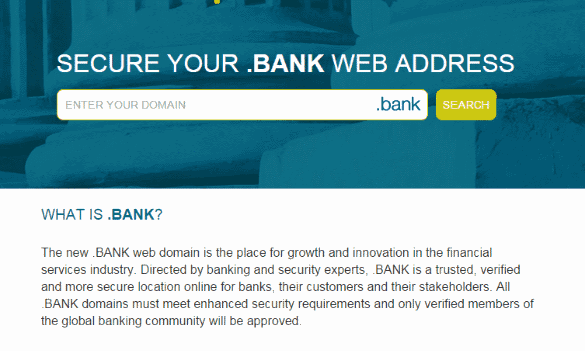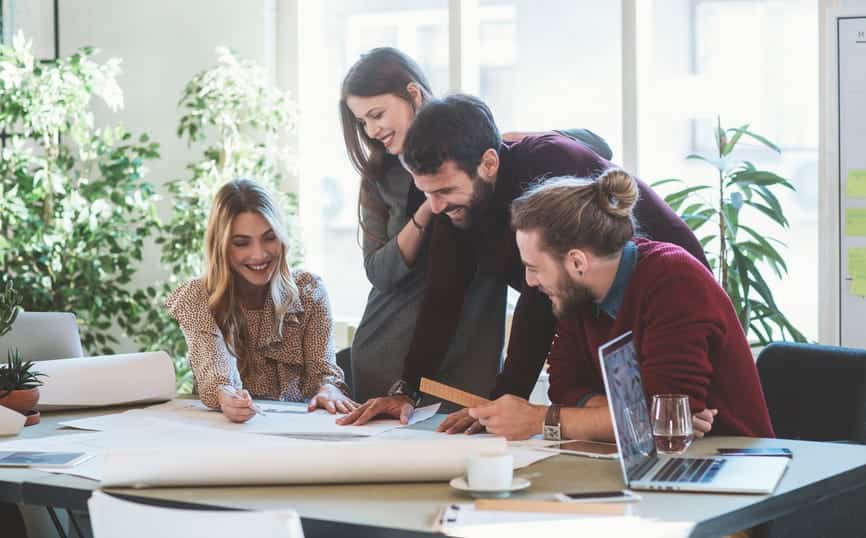If you’ve been thinking of buying a domain name, then you might have asked yourself if you absolutely need to buy a “dot-com”? What if the .com for your idea is already taken?
I like to recommend that if you’re buying a new domain, you should get the dot-com, because that’s what most people assume when they hear a domain name. But times are changing, and there are a lot more options if your domain name is already taken…
To Get A Dot Com Or Not…
Before we get into the way domains affect websites, we need a clear understanding of what domains do. Domains are the backbone of the Internet. They are the foundation in a building and the main ingredient in a sauce.
Without a domain, your website wouldn’t exist… or at least we wouldn’t be able to get to it. The way the domain is set up can greatly affect your website’s performance and marketing. The most important aspects to consider when buying a domain name are:
- The top level domain (TLD) – which means dot-com, dot-net, dot-org, etc.
- The words in the domain
- The history of the domain
Let’s look into each of these more closely.
What is a Top Level Domain?
‘TLD’ stands for ‘top level domain’ and is the string of letters at the end of a domain name e.g. with www.example.net the TLD is “net”. There are several different types of TLDs including;
- Country Code Top Level Domains (like .ca, .com.au, .fr, .co.uk)
- New Generic TLDs (like .nike, .coke, .actor)
- Old Generic TLDs (like .net, .org, .info)
The TLDs you’re probably most familiar with, such as com, net, org, info etc., are unsponsored generic top level domains (gTLDs). You’ve probably also seen plenty of ccTLDs which are country code top level domains such as .com.au, .co.uk, .fr etc. The new kids on the block, often referred to as ‘new gTLDs,’ are now shaking the established order up a bit as thousands of new options have been released. These include branded gTLDs such as .nike or .coke and non-branded TLDs such as .actor, .adult and .digital.
Which Top Level Domain is Right for Me?
The main factors which should inform your decision of which TLD to choose are;
- Domain availability
- Customer familiarity and trust
- Registration eligibility
- Marketing potential
Domain Availability
We’ll talk a bit more about the words in the domain in the next section but you probably already know that many of the domains that you might want to use have already been taken. One way to get around this is to use the same words but a different TLD.
For example, if you really wanted the domain pickledpete.com, but it was already taken, you could use pickledpete.co or pickledpete.net instead. However, do keep in mind that having the same domain words as someone else can be confusing and if the other website is already established it might be hard for you to make a name for yourself.
Customer Familiarity & Trust
Different TLDs will have more familiarity and trust with different markets. The most common instances of this occur with ccTLDs which indicate that a website is from a particular country.
This is particularly true in Australia where the registration of .com.au TLDs is strictly controlled and you need to have an Australian Business Number (ABN) in order to use this TLD for your website. Therefore, consumers have learned that websites that have .com.au are verified Australian businesses and organizations.
You’ll also see some bias amongst the old gTLDs and between the old and the new. In general, a .com is considered to be the Holy Grail because it’s easy for people to remember and is considered global.
Another global top level domain, .info, is also generic but it’s gained a bit of a reputation as being popular with spammy websites and therefore might not be as trusted by consumers.
The ‘new gTLDs’ that I mentioned earlier may be a bit confusing to consumers at this stage as they are still very new. As such, they might suffer from less consumer trust and familiarity as well but I think that will improve over time.
Registration Eligibility
Some TLDs have registration restrictions that you will need to meet if you want to register and use a domain with that TLD. These can include country restrictions like I mentioned above with the Australian ccTLD .com.au, restrictions that say you must be an educational organization (.edu) or restrictions that require you to be operating in a particular industry e.g. .BANK . Look into the restrictions of each TLD you are considering to make sure you are eligible.


Marketing Potential Of Your Domain
The marketing potential of each TLD should also be considered. We’ve seen this in the past with .com rising to become the most popular and, in many cases, default domain which obviously raises its marketing potential but we’re seeing it happen again and on a much larger scale with the new gTLDs.
We talked about the downsides of having something like example.digital because some consumers will be less familiar with that TLD (for now) and therefore give it less trust, but what about the marketing upside? People are naturally curious about something new and the new gTLDs might be an opportunity for you to set yourself apart from your competitors by doing something different.
The Words in the Domain
This is what most people think about first and foremost when choosing a domain name, and rightly so as it is the thing that will uniquely identify your website and make it memorable. There are a number of factors to consider when choosing the words to go in your domain;
- Simplicity and length
- Brand
- Keywords / being descriptive
Simplicity and Length
The easier your domain is to communicate and remember the better. Here are some general rules to keep in mind;
- Shorter is better
- Don’t include hyphens because people will forget to include them
- Don’t include numbers because people will forget whether it’s the number ‘8’ or the word ‘eight’
- Don’t include words that aren’t spelled how they sound
A good litmus test is to try telling it to your friends and family on the phone and seeing if they can understand it correctly without too much trouble.
Brand vs. Descriptive Words (Example: Amazon.com vs. BuyBooksOnline.net)
There’s an ongoing debate over which is better, a brandable domain or a keyword/descriptive domain. Both options have their merits and we’ll discuss those of keyword domains in the next section.
Brandable domains are those that are designed to be a brand which means they need to be memorable and recognizable. Usually, this means they’ll be short and simple and often they include made up words or words that aren’t descriptive of the business or website, but this isn’t always the case.
Keyword domains, on the other hand, are designed to be descriptive of what the business or website is about and they tend to be longer.
Where it gets a little complicated is when brandable domains overlap with keyword domains i.e. they are both descriptive and memorable. If you can get a domain like this then that would be great because, as we’ll see in the next section, descriptive domains have a number of advantages.
Keyword / Descriptive Domains
Keyword domains are those that contain words that are descriptive of what the business or website is about. This is obviously helpful because potential customers will know what you do immediately from just looking at the domain, but the driving force behind the popularity of keyword domains has been their ability to perform well in search engines.
The presence of keywords in your domain gives a strong indication to the search engines that your website is relevant to those keywords which in turn helps you rank for those keywords.
This effect became so pronounced that Google actually decided to make a specific adjustment to its algorithm to lessen the positive affect if the website was low quality.
However, there’s still plenty of advantage to be had if your website is high quality, which keeps the demand for keyword domains high.
The History of the Domain
This is an aspect that not many people think about but it’s certainly something you should be aware of when choosing a domain. There are three main types of history that you should keep in mind;
- Search engine history (positive or negative)
- Activity history
- Brand history
All domains have potential history (positive or negative) so you should always run some checks, but you should be particularly careful when buying a domain from a broker, marketplace or other party who’s not an official registrar.
Search Engine History
An important part of getting a website to rank well in the search engines is to encourage other websites to link to it.
Doing this in a natural and high quality way is often difficult and expensive which led many people to develop artificial ways of ‘building’ links to their websites such as creating large networks of their own sites and interlinking them, paying others to link to them or trading links with people.
Eventually, Google got fed up with these manipulative tactics and started handing out penalties to websites that it detected were using these artificial link building techniques.
Over time, some websites were able to clean up their act and get the penalties removed but others either weren’t able to get the penalties lifted or couldn’t be bothered trying and simply abandoned their websites and domains.
If you are unlucky enough to register a domain that still has a penalty from a previous owner then you could have a hard time getting your website to rank in search engines.
The flip side of this is if a previous owner of a domain was able to attract natural and high quality links to the website, and those links still exist, the domain could have an easier time of ranking because it already has many links pointing to it.
How to Check a Domain’s Search Engine History
One simple check you can do to see if the domain has a penalty is to see of the domain words on their own reveal the website when you search in Google.
For example, if the domain you were looking at is pickledpete.com then you would search Google for ‘pickledpete.’ If the domain doesn’t appear on the first page then that’s a strong indication that it might have a Google penalty.
Here’s Google’s head of web spam, Matt Cutts, talking about some other ways you can check the standing of a domain before purchasing it.
Before You Get a Dot Com – Check The Activity History
Another type of negative history you need to be aware of is whether the domain has been used in the distribution of spam or malware either by email or through a website. If the domain has been used for these types of activities in the past, there’s a good chance it will be on at least a few blacklists which might make it difficult to rank in search engines or to get your emails read.
How to Check A Domain’s History
There are several websites that will allow you to check the reputation of a domain for free. Most of these are focused on email sending reputation.
You can also plug the domain into Archive.org (The Wayback Machine) which is an archive of millions of websites over time. There’s a good chance you’ll be able to see snapshots of the website that appeared on the domain before it expired.


Brand History
The third type of history to be aware of is the reputation of the business or brand that was previously using the domain. This is particularly relevant if the words in the domain are an exact match to your business name or the previous owner was using the domain itself as their brand e.g. their brand might have been ‘PickledPete.com’ rather than ‘Pickled Pete.’
If the previous domain owner had developed a bad reputation then that might be reflected on a number of 3rd party review sites. Some of these negative reviews may be able to be removed once you explain that you are a new and unaffiliated business, however, many of these sites are notoriously difficult to deal with and it might be quite challenging to get the reviews taken down.
The easy way to check the brand history of the domain would be to run a few simple searches and see what you find.
Conclusion
As you can see, there’s quite a lot to think about when choosing a domain name. It may be frustrating and time consuming but if you follow the advice in this article and set up a spreadsheet to track all your research, you’ll eventually find the right domain for you and you’ll be glad you took the time and energy to do it properly.
Rochelle Dobkins is part of the team at Architelos.com, a company that provides consulting, software and services to the domain industry. While keenly interested in many aspects of tech, websites and domains, Rochelle is particularly excited about the recent release of the new TLDs and how they will shape the future of the internet.






